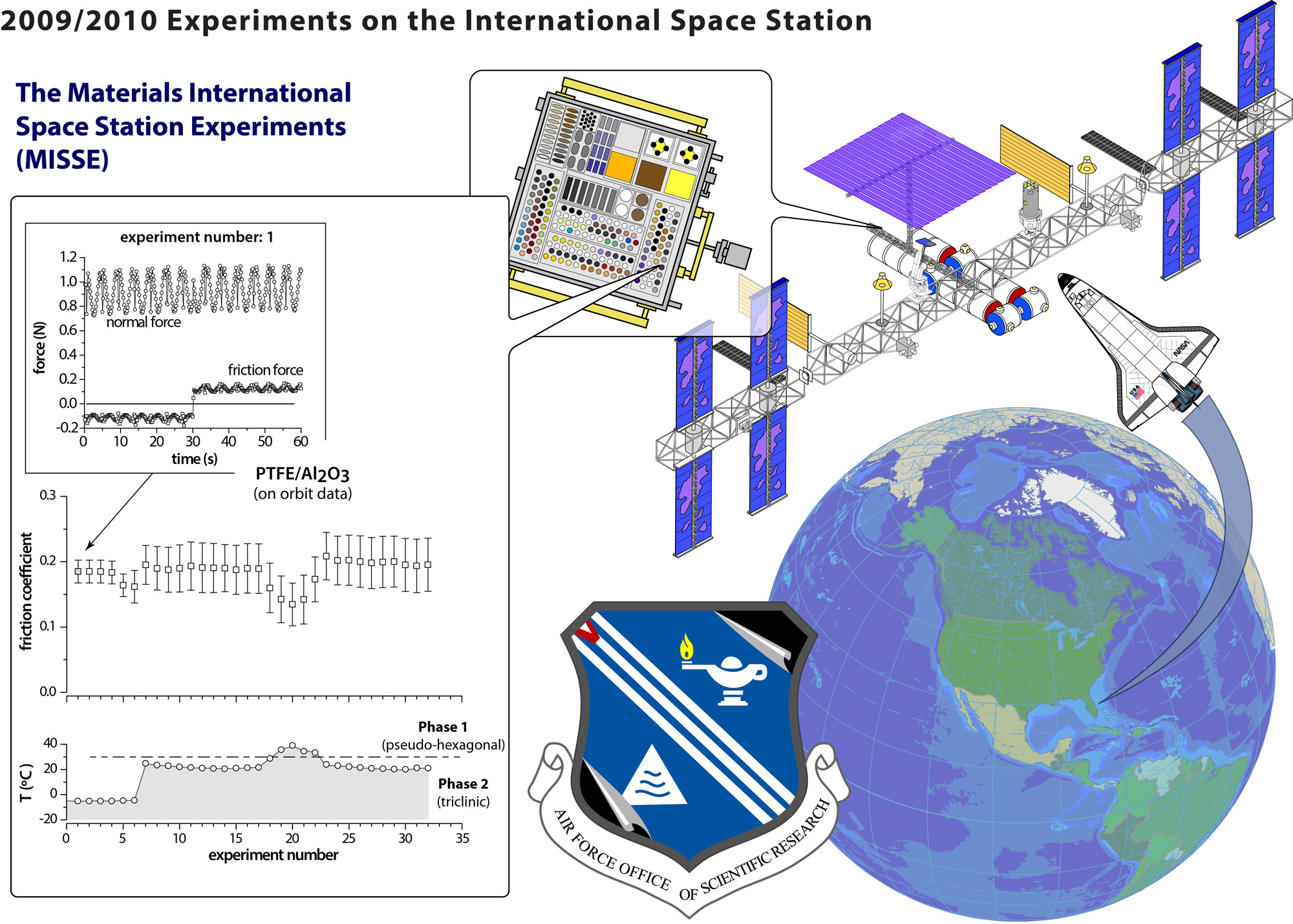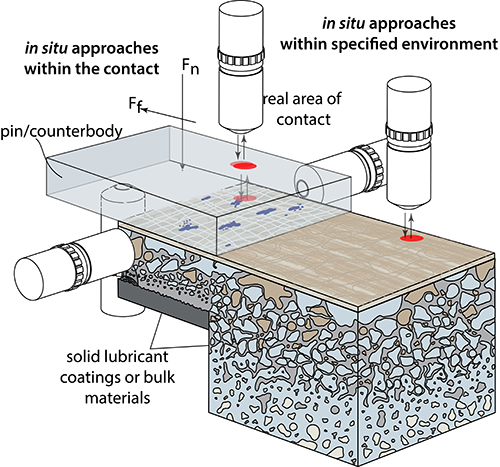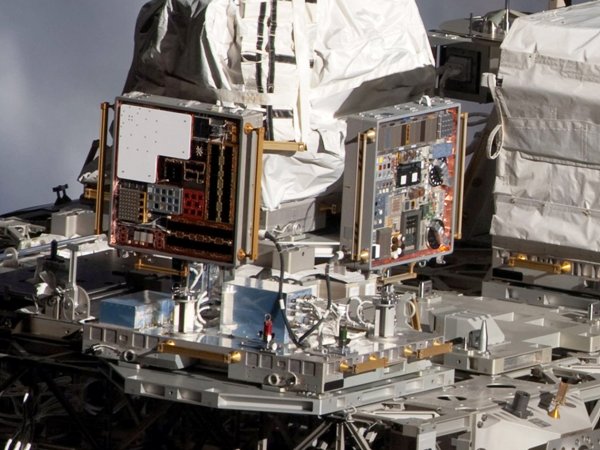Lehigh University
The Tribology Laboratory at Lehigh University
Research
Materials Tribology
Reliability of Materials in Extreme Environments
Another focus of our research is to develop materials for reliable operation in extreme environments. Complicating the reliable performance of materials is the interaction between materials and surrounding environmental constituents such as vacuum, gases, or heat/cold for application environments ranging from space to the human body. These environments preclude the use of traditional engineering materials that wear away or otherwise degrade quickly, which continues to challenge design engineers with ever increasing performance demands.
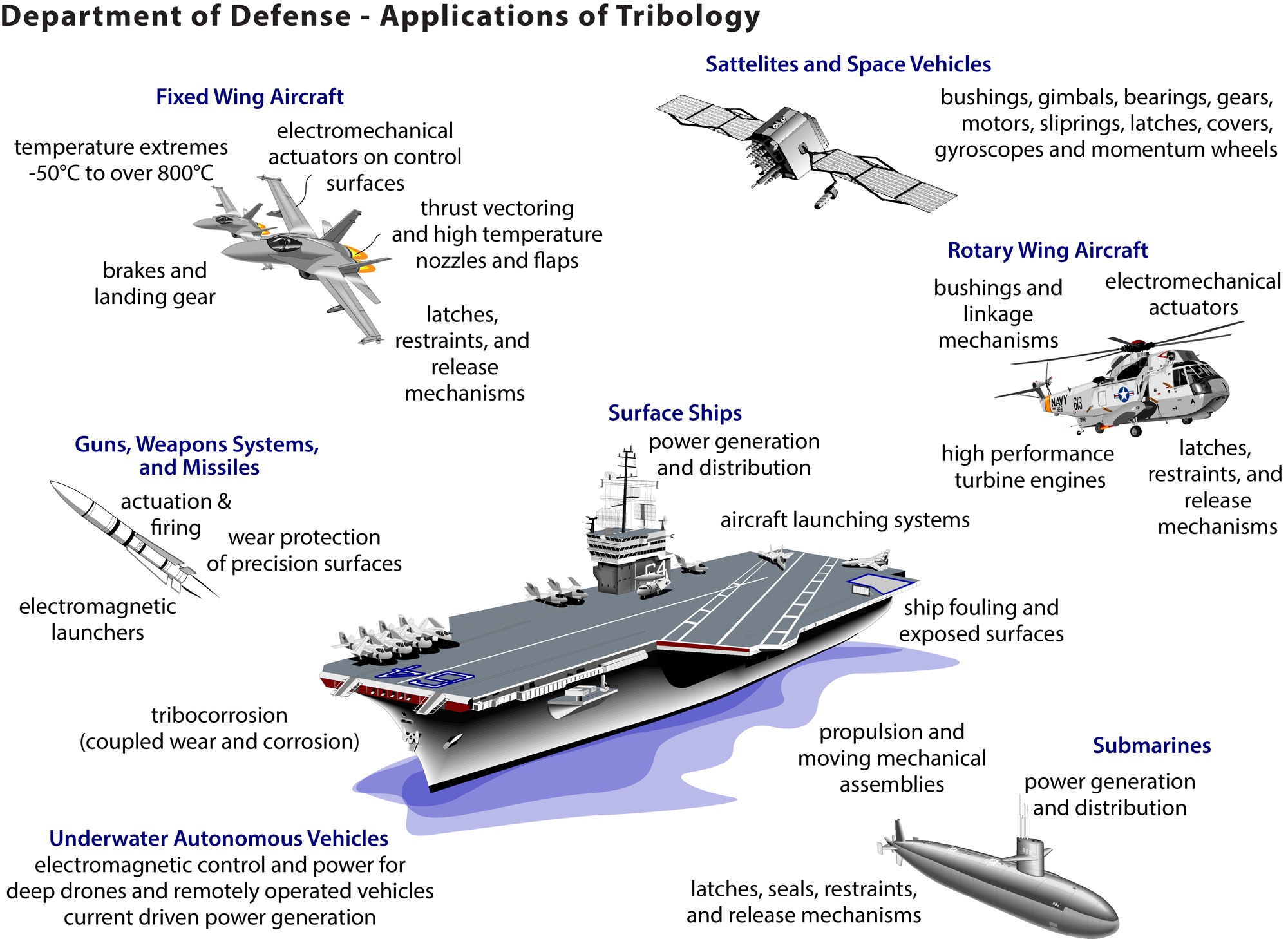
MISSE 7: Space Tribology

While studying the effects of the low earth orbit environment on space materials, we designed, built and sent experiments, including eight active tribometers (measure friction and wear) and more than 32 passive exposure samples, to low earth orbit as part of the Materials on the International Space Station Experiments (MISSE). These experiments resulted in certification of several new space materials as well as preventing application of one failed coating that was planned to be used on several commercial and military satellites. Failure of this coating could have resulted in mission failure in satellites that can cost at least several hundred million dollars.
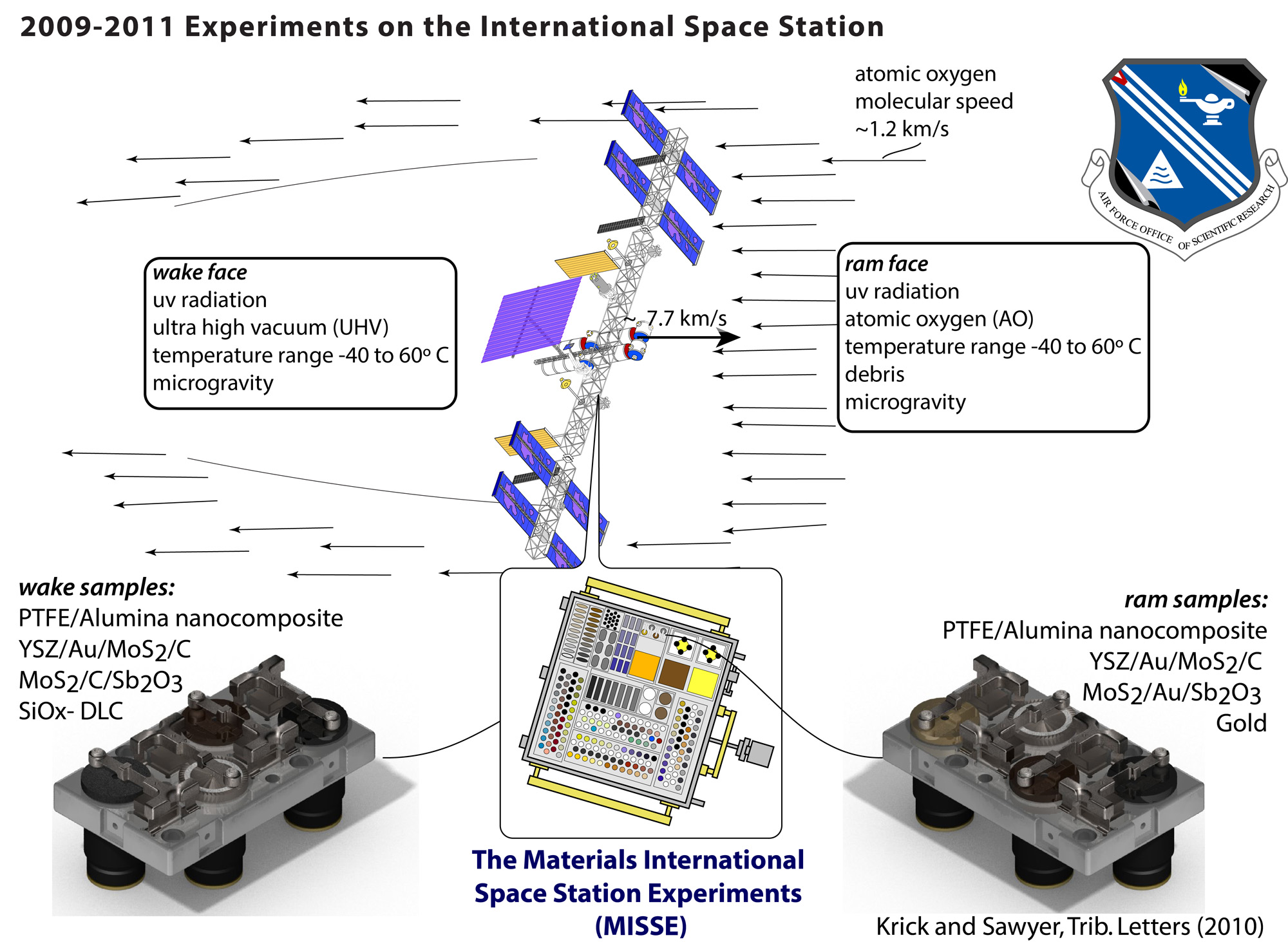 MISSE 7- Materials on the International Space Station Experiments (7th mission)
MISSE 7- Materials on the International Space Station Experiments (7th mission)
Purpose: To characterize the performance of new and existing materials when subjected to the synergistic effects of the space environment.
Launch: STS 129 - November 2009
Recovery: STS 134 - May 2011
Duration: Approximately 18 months
What is MISSE?
MISSE is a set of experiments mounted externally on the ISS.
-Active and Passive experiments
-Powered by the ISS
-Uplink and downlink communication capabilities
Collaborative effort between government, industry, and academia. Legacy hardware and a well developed program allows express turnaround, low cost materials experiments in space.
